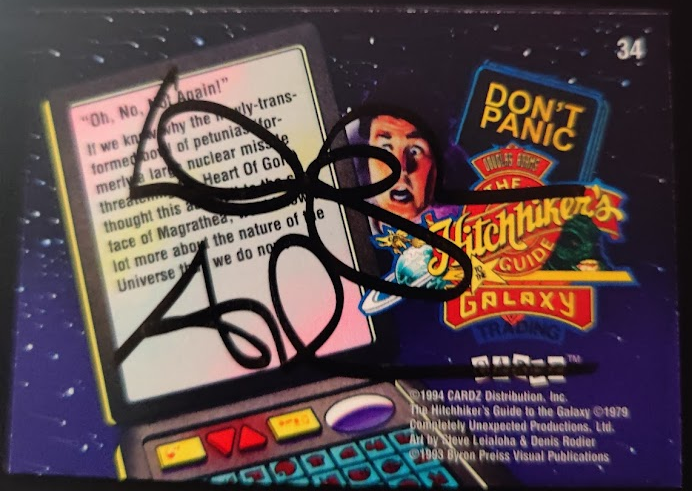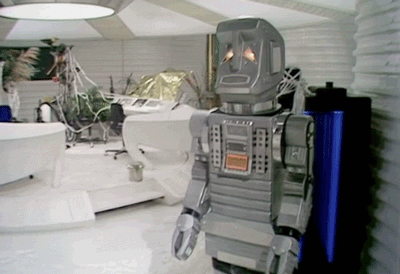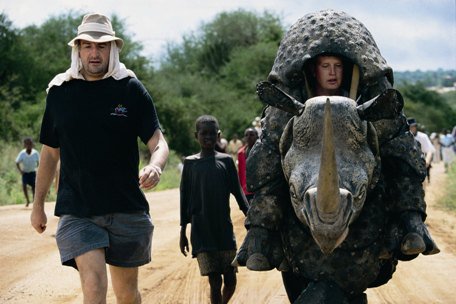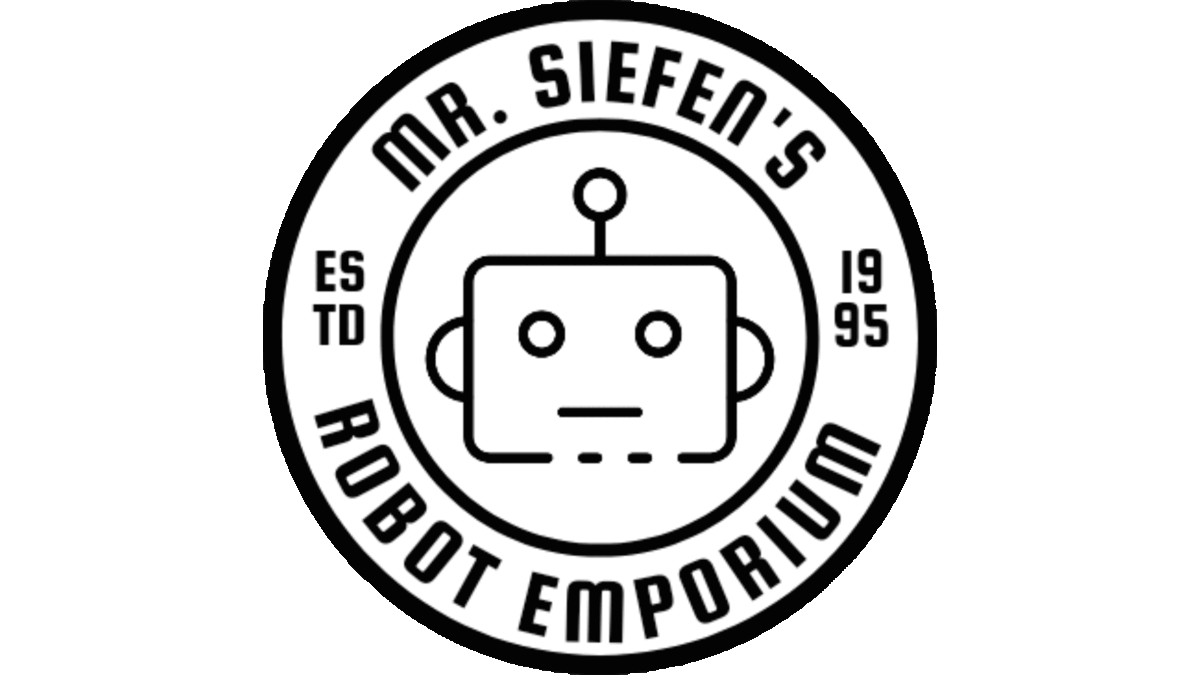Douglas Adams

D.O.B. Mar. 11, 1952
D.O.D. May 11, 2001
Wikipedia: link
Why is Douglas Adams an Inspiration?
Author, technologist, environmentalist and visionary are only the easiest words I can find to use when describing Douglas Adams. Throughout much of his life, and even today, people see him as that "funny sci-fi guy", the author of H2G2 (Hitchhikers Guide to the Galaxy) or as a script editor for Dr. Who. He was and is those things, but that's much like seeing the light side of the Moon and never wondering what's around the other side.
Douglas had a whole media franchise with H2G2. There was a radio series, tv show, books, merchandise, comic books, trading cards and more.

He used his Celebrity status gained from this to then elevate issues close to his heart. He was a big supporter of Save the Rhino International, he spoke regularly at technology and environmental conferences and was a major advocate of the Apple and Macintosh computers.
Find out more in the video below
Douglas Adams and Technology
At first glance we see Douglas's obvious influences in my love of robotics, space, and technology. As a kid seeing Marvin the Paranoid Android had an impact, but there were plenty of robots and automated systems in his books and other series like Starship Titanic. The wrinkle was that none of it, Marvin, the Vertical Happy People Movers, Eddie the On-board Computer or the Nurtimatic Drinks Dispenser worked like they should. They are perfect examples of technology, which means they don't work yet. Seeing all these futuristic things with the obvious silly flaws formed my passion for wanting to invent things to fix those silly flaws that exist in today's robots and automated systems.

When you look deeper both Douglas Adams and Ted Nelson had a deeper fundamental belief in the power of networked computers and the "Interconnectedness or Intertwingularity" of data. Computers went through 4 stages of how we have misused them.
Originally computers were just fancy calculators and people for decades couldn't imagine any practical uses for them personally. Then with ASCII and Text we turned computers into typewriters and while it found it's way to more homes it just did the stuff we could already do on paper. Then we figured out graphics, mice, the gui. This was a massive advancement that we used to make videos, pictures and games. All things you could do with a television. So finally at the 4th stage of computers we've realized that all computers can be connected and share data or the digital calculations, paper and visual media.
That 4th stage meets the Interconnectedness factor, but Ted Nelson hates, Douglas would passionately, mildly, passively dislike, how the World Wide Web accomplished this interlinking. In all 4 stages we made the computer do something new, we simulated a real world object in the computer by creating a digital model of it.
The issue underlying all of this is we keep bringing the real world defects, downsides and issues to the digital models we build on the computer (modeling device). The world wide web is (historically and only recently isn't always) a collection of a billion brochures that we could easily make on paper. Thats why you can easily print most websites. If you can print it then it's only doing what we can do with regular old paper.
Douglas Adams and Technology cont.
Below is a series of videos that I think best show Douglas's own thoughts about Technology. I've added a small description for each and what I really like about each video.
Douglas Adams' Hyperland
Hyperland was created in 1990 to show one interpretation of Non-Linear Media. He forsaw the "Rabbit Holing" people would do on site's like wikipedia well before it's creation. You get to see Micons (precursor gifs), a system agent (siri, alexa, google assistant) and more. The main take away was again getting away from the linear non interactive media we already have with television.
Douglas Adams' at PDC 1996
PDC (Professional Developers Conference) was a conference for software developers at Microsoft from 1992-2011. Douglas did the Keynote speech in 1996 and saw a world of IOT devices, big data and more.
Douglas Adams' at ESC 2001
ESC (Embedded Systems Conference) was held at the same exact convention center as his 1996 talk oddly enough, at Moscone Convention Center, in San Francisco. Douglas did the Keynote speech in 2001 and again saw and spoke about his philosophy, but also the future ideas we need to build into our networked systems.
Douglas Adams and the Environment
Douglas once wore a Rhino costume in order to help spread awareness, raise money for and teach natives about Rhino Conservation. While wearing a rhino costume is an impressive feat, he (and several others) trekked across parts of Africa with the intention to climb Mt. Kilimanjaro in the costume. During this time he also may have been inspired to write his "Desmond the Rhino" short story in Salmon of Doubt.

He didn't stop there though. Working with the Zoologist Mark Cawardine, they traveled the world seeking endangered and rare animals. They learned about why they've become endangered, looked at how they are being protected (or not in some sad cases) and how important these species are. "Last Chance to See" was a 6 part Radio series as well as a book but the Audible version is an experience you need! They recorded their whole trip live including using condoms to waterproof a microphone to record the sound of the Yangtze River to better understand the habitat the Baiji (Yangtze River Dolphin) live and navigate in.

The environment and our species from the smallest bug to the largest bear all matter to me and the rest of the world greatly (even if they don't realize it fully). In one of my former careers I spent two summers as a Ecology and Conservation Teacher and then Director for Lost Lake Scout Reservation. My job was to teach Insect, Bird, Reptile & Amphibian Studies, Astronomy and Environmental Science.
Each level of an ecological system is dependent on the other. This is true of many robotic and technological systems as well! One brilliant idea Douglas presented was to STOP taking up real world spaces building artificial realities like theme parks, bowling alleys and tacky tourist hotels on top of real ecological wonders like Bali, the beaches, our rivers, etc. We need to work on VR, AR and do those artificial reality things without destroying the actual reality around us.
One way to help the environment is to work towards non-outdating technologies, upgradable hardware and supporting virtual projects that save on real world travel, space and environmental damage. Another good list of ways to help can be found here.
Douglas Adams and the Environment cont.
While I can't share the "Last Chance to See" audiobook here in good conscience while full well knowing you can support the estate of Douglas and the efforts of Mark Cawardine by buying a copy of your own. This effort will also help it be seen again by people on Audible thus helping his ideas spread further.
In what I consider to be a very fair exchange, heres an hour and a half long lecture by Douglas at the University of California.
In an even fairer exchange I'm throwing in Neil Gaiman's moving and excellent lecture at the Douglas Adams Memorial Lecture in 2015 which was started to support Save the Rhino International in his memory.
Finally in a true "tour de force" we dug deep and really looked in the back closet for this one. Robbie Stamp, the executive producer of the H2G2 2005 movie gave some more insight into Douglas's thoughts about the environment. Below is an embedded instance of that April 22, 2005 interview.









